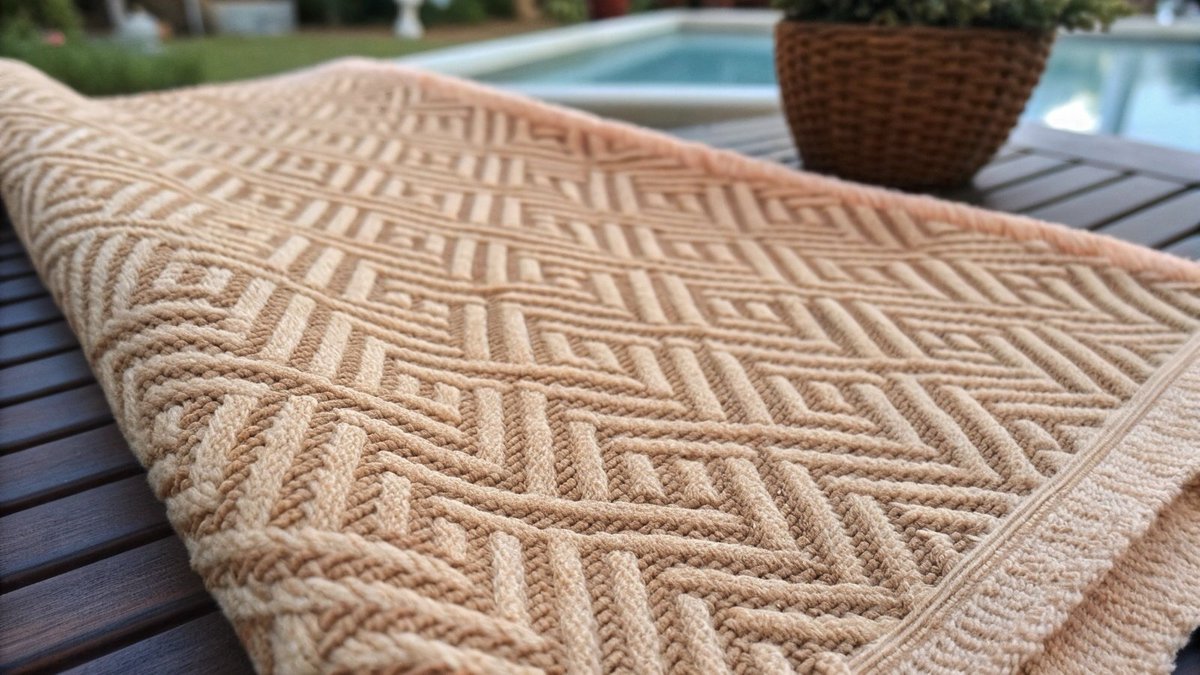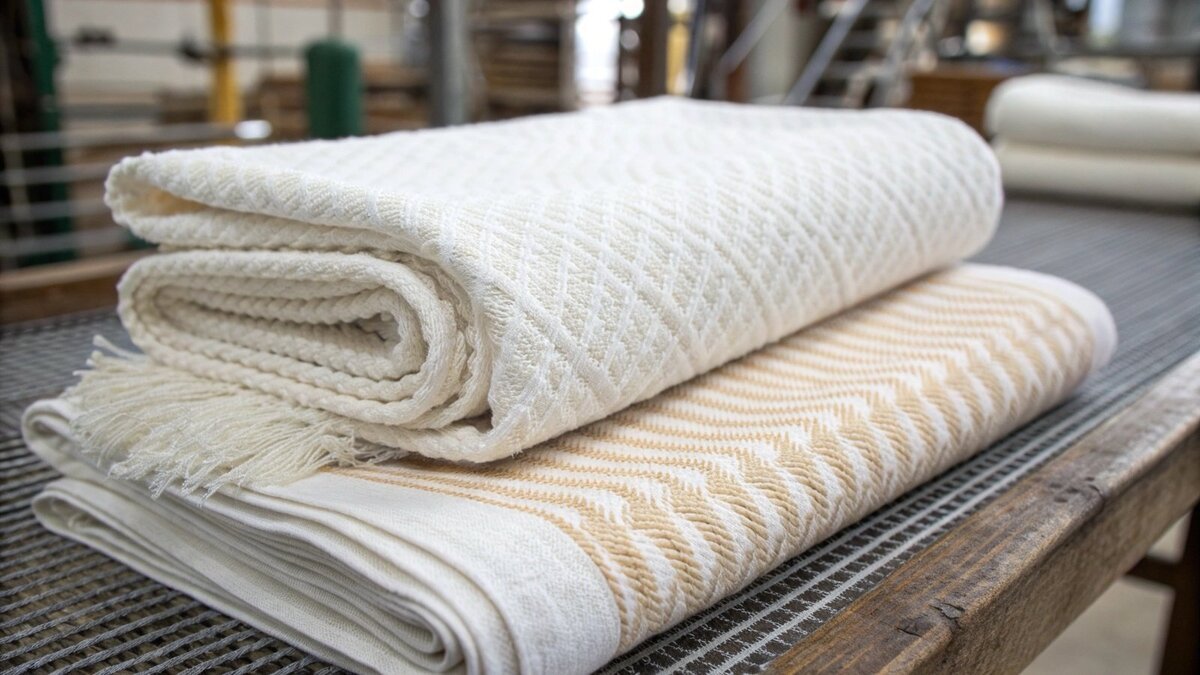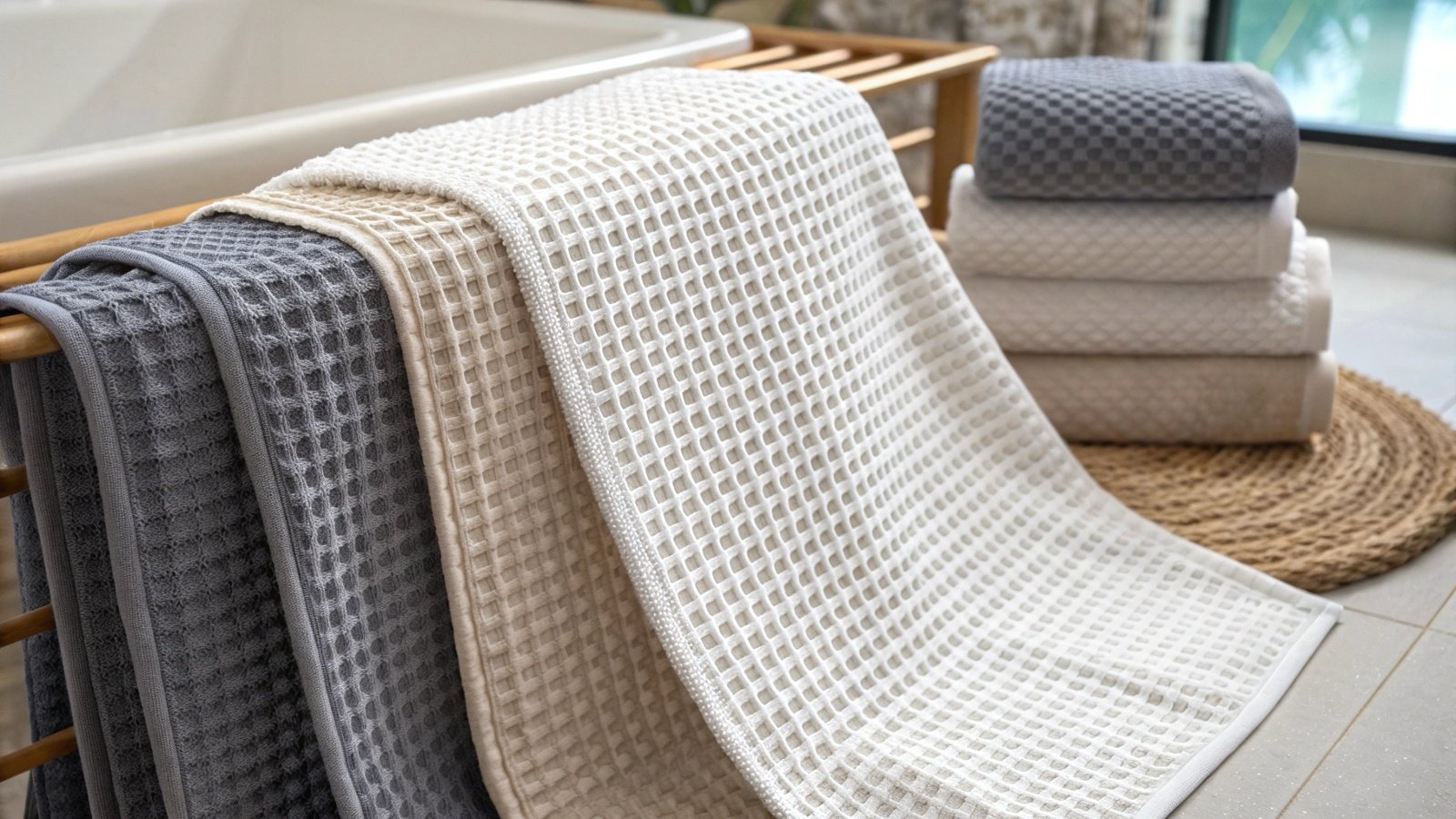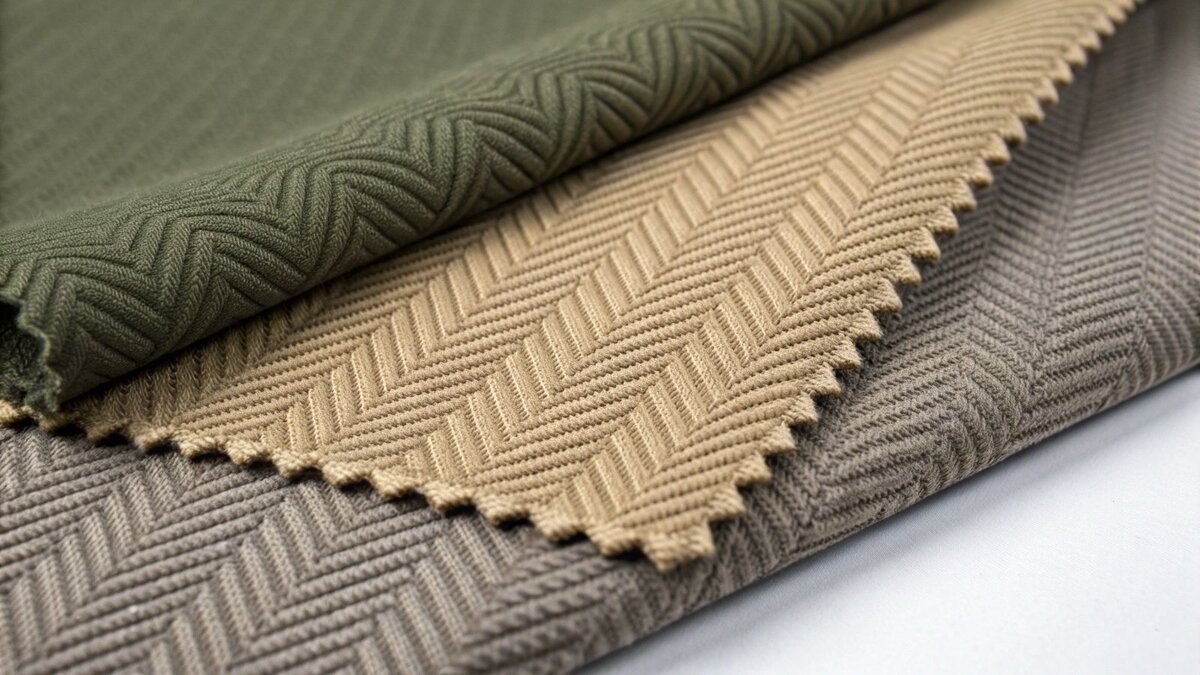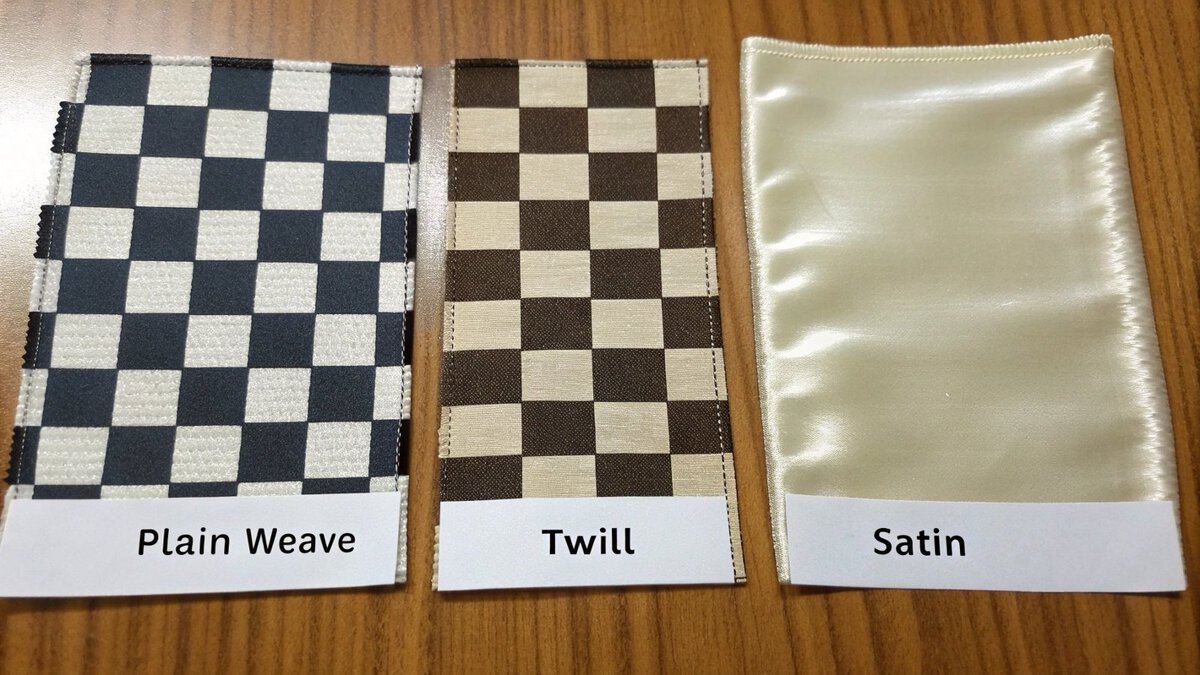Feeling lost in the world of towel weaves? The wrong choice can lead to unhappy customers and poor reviews. Understanding the weave is key to selecting a towel that performs perfectly.
A towel’s weave is the specific pattern used to interlace vertical (warp) and horizontal (weft) threads during manufacturing. This pattern directly impacts the towel’s final texture, absorbency, durability, and even how fast it dries. The weave is the foundation of a towel’s performance.
Choosing the right towel for your brand goes beyond just color and size. The weave is a critical detail that determines how the towel feels and functions. A great towel can elevate a customer’s experience, whether at a hotel, spa, or in their own home. In this article, I’ll break down the most common weaves I’ve worked with over the years. I’ll explain the pros and cons of each so you can make a confident decision for your next towel order. Let’s get into the details.
What is the best weave for towels?
Searching for the most absorbent towel possible? A weave with poor absorption leads to a damp, ineffective product. Weaves with "floats" are your secret weapon for superior performance and happier customers.
The best weaves for absorbency are those with "floats," like twill and waffle weaves. Floats are threads that skip over several others, creating more surface area. This structure allows cotton fibers to bloom with washing, making the towel softer, thirstier, and more effective at drying.
When we talk about "floats" in weaving, we mean that a yarn—either warp or weft—is designed to pass over multiple threads before interlacing again. A simple plain weave is just over-one, under-one. But a twill weave might be over-two, under-one. Those "over-two" sections are the floats. I’ve found this makes a huge difference in performance. I remember a new hotel client who was focused on a classic look. They almost chose plain weave towels. I sent them a sample of a twill weave towel and a plain weave one, asking them to wash both just once. The twill towel became noticeably plusher and absorbed water instantly. The floats had relaxed and untwisted slightly, a process we call "blooming." This increases the surface area of the cotton fibers, making the towel act like a sponge. It was the proof they needed to switch.
| Weave Feature | Plain Weave | Weave with Floats (Twill/Waffle) |
|---|---|---|
| Structure | Tight, flat, one-over-one | Looser, textured, floats over threads |
| Initial Feel | Can be stiff | Often softer from the start |
| After Washing | Softens slightly | "Blooms" to become much softer |
| Absorbency | Moderate | High to Very High |
What is the best weave structure for towels?
You need a towel that is absorbent but also light and luxurious. A dense, heavy weave can feel suffocating and takes forever to dry. The waffle weave is the champion for modern performance.
For a perfect balance of high absorbency, a lightweight feel, and quick-drying properties, the waffle weave is the best structure. Its honeycomb-like pockets trap water efficiently while allowing air to circulate, making it a customer favorite for home, spa, and gym use.
The waffle weave, also known as honeycomb weave, is one of my personal favorites, and it’s been a huge hit for many of our clients. The structure is brilliant. It uses a combination of floats and tight plain weave to create a three-dimensional grid of recessed squares. These little pockets are what make the magic happen. They dramatically increase the towel’s surface area, allowing it to soak up a surprising amount of water without feeling heavy or bulky.
A few years ago, we helped a direct-to-consumer brand launch a kitchen towel line. They wanted something that looked premium and performed exceptionally. We decided on an 8/2 unmercerized cotton woven into a waffle structure. The results were fantastic. Their customers raved about how one towel could dry a sinkful of dishes and then be completely dry itself in just a few hours. This quick-drying benefit is a major selling point. It prevents that damp, musty smell that plagues thicker towels and makes them ideal for humid climates or high-use environments like spas and gyms.
Key Benefits of Waffle Weave
- Super Absorbent: The pockets trap and hold water effectively.
- Lightweight: Offers high performance without the weight of traditional terry.
- Quick-Drying: The airy structure promotes airflow, reducing mildew risk.
- Stylish Look: Provides a unique, modern aesthetic that stands out.
Which weave is the sturdiest woven structure?
Durability is crucial, especially for towels in hotels or gyms. A towel that frays or tears after a few washes can damage your brand’s reputation. Twill weave is the solution for long-lasting quality.
The twill weave is one of the sturdiest structures available. It is defined by a distinct diagonal rib pattern. This design distributes stress more evenly than other weaves, making it exceptionally resistant to tearing and perfect for products that require heavy-duty performance and frequent washing.
If you want a towel that will last, look to twill. The best example of its strength is in your closet: denim jeans are made with a twill weave. The structure’s secret is how the threads interlace. The weft thread passes over one or more warp threads and then under two or more, with the pattern stepping over by one thread in each row. This creates that classic diagonal line and, more importantly, it allows the fabric to handle tension and strain much better than a simple plain weave. In a plain weave, a snag can easily pull a thread and create a hole because the stress is isolated. In a twill, the load is distributed across several threads, making it much tougher to tear.
We often recommend twill weaves to clients in the hospitality and fitness industries. They need towels that can survive hundreds of harsh, industrial laundering cycles. A tightly woven twill can take that abuse. At the same time, because twill has floats, it still offers good absorbency and a soft feel, striking a great balance between pure function and user comfort. It proves that a towel doesn’t have to be flimsy to be soft.
What are the three basic weave types?
Starting out, textile terms can feel like a different language. Not knowing the basics makes it hard to communicate your vision to suppliers. In reality, it all comes down to three fundamental weaves.
The three basic weaves that are the building blocks of almost all woven fabrics are plain, twill, and satin. Plain weave is a simple checkerboard grid. Twill weave creates a diagonal pattern. Satin weave uses long floats for a smooth, glossy surface.
Every woven fabric you encounter, from your shirt to your sofa, is based on one of these three simple concepts. After years in the industry, I know that understanding them is the first step to making smart fabric choices. It’s the language that a factory understands. Let me break them down for you.
1. Plain Weave: This is the most basic structure. Each weft yarn alternates, going over one warp yarn and under the next. It creates a simple, strong, checkerboard-like pattern. It’s ideal as the "ground" fabric for terry loop towels or for simple, no-fuss printed kitchen towels.
2. Twill Weave: As we’ve discussed, this weave is known for its diagonal lines. By floating the weft yarn over two or more warp yarns, you get a stronger, more pliable, and more absorbent fabric than plain weave. It’s a versatile workhorse for durable towels.
3. Satin Weave: This weave maximizes floats. A weft yarn might float over four or more warp yarns before going under one. This minimizes intersections and creates an incredibly smooth, lustrous, and drapeable surface. However, it’s not practical for the body of a towel. Those long floats snag easily and aren’t very absorbent. We use satin weave almost exclusively for decorative borders on luxury towels, where it adds a beautiful, silky accent.
| Weave Type | Structure | Key Properties | Common Towel Use |
|---|---|---|---|
| Plain | One-over, one-under grid | Strong, stable, flat | Ground fabric for terry loops, basic kitchen towels |
| Twill | Diagonal rib pattern | Durable, absorbent, drapes well | Hardworking spa, gym, and kitchen towels |
| Satin | Long surface floats | Smooth, shiny, luxurious | Decorative borders and labels on premium towels |
Conclusion
The weave is as vital as the yarn itself. Understanding plain, twill, and waffle weaves empowers you to choose the right towel for your brand’s specific needs for any use.

